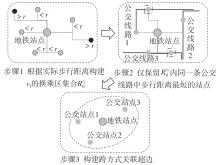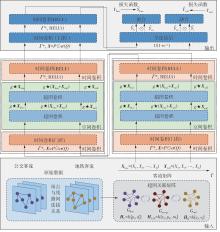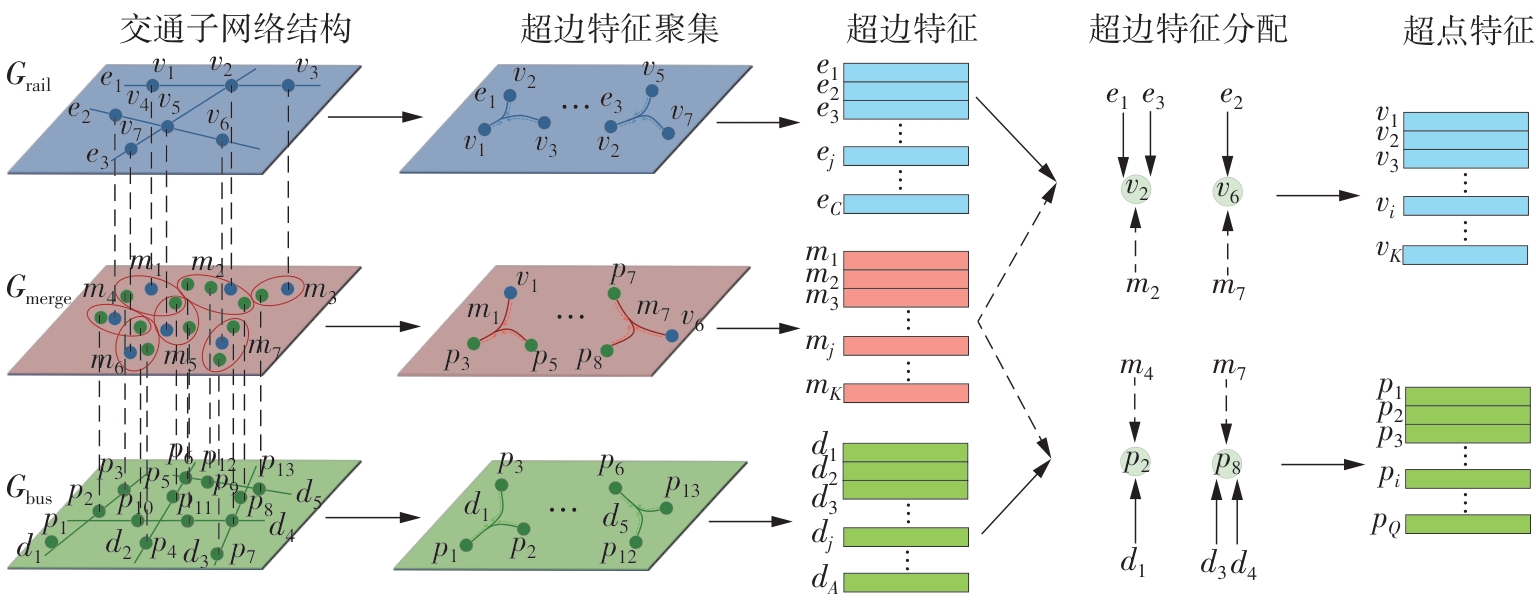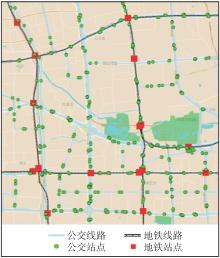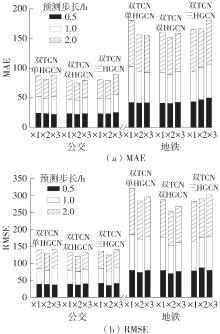| 1 |
LEI D, CHEN X, CHENG L,et al .Inferring temporal motifs for travel pattern analysis using large scale smart card data[J].Transportation Research Part C:Emerging Technologies,2020,120:102810/1-21.
|
| 2 |
LIANG Y, HUANG G, ZHAO Z .Joint demand prediction for multimodal systems:a multi-task multi-relational spatiotemporal graph neural network approach[J].Transportation Research Part C:Emerging Technologies,2022,140:103731/1-19.
|
| 3 |
刘静,关伟 .交通流预测方法综述[J].公路交通科技,2004,21(3):82-85.
|
|
LIU Jing, GUAN Wei .A summary of traffic flow forecasting methods[J].Journal of Highway and Transportation Research and Development,2004,21(3):82-85.
|
| 4 |
ZHANG N, ZHANG Y, LU H .Seasonal autoregressive integrated moving average and support vector machine models[J].Transportation Research Record,2011,2215 (1):85-92.
|
| 5 |
FILIPOVSKA M, MAHMASSANI H S .Traffic flow breakdown prediction using machine learning approaches[J].Transportation Research Record,2020,2674(10):560-570.
|
| 6 |
BRATSAS C, KOUPIDIS K, SALANOVA J M,et al .A comparison of machine learning methods for the pre-diction of traffic speed in urban places[J].Sustainability,2020,12:142/1-15.
|
| 7 |
ZHAO Z, CHEN W, WU X,et al .LSTM network:a deep learning approach for short-term traffic forecast[J].IET Intelligent Transport Systems,2017,11(2):68-75.
|
| 8 |
TAN Y, LIU H, PU Y,et al .Passenger flow prediction of integrated passenger terminal based on K-Means-GRNN[J].Journal of Advanced Transportation,2021,2021:1055910/1-14.
|
| 9 |
赵建东,朱丹,刘佳欣 .基于时间序列分解与门控循环单元的地铁换乘客流预测[J].华南理工大学学报(自然科学版),2022,50(5):22-31.
|
|
ZHAO Jiandong, ZHU Dan, LIU Jiaxin .Metro transfer passenger flow prediction based on STL-GRU[J].Journal of South China University of Technology (Natural Science Edition),2022,50(5):22-31.
|
| 10 |
ZHANG J B, ZHENG Y, QI D K .Deep spatio-temporal residual networks for citywide crowd flows prediction[C]∥Proceedings of the 31st AAAI Conference on Artificial Intelligence.San Francisco:AAAI,2017:1655-1661.
|
| 11 |
GUO S N, LIN Y F, LI S J,et al .Deep spatial-temporal 3D convolutional neural networks for traffic data forecasting[J].IEEE Transactions on Intelligent Transportation Systems,2019,20(10):3913-3926.
|
| 12 |
邵春福,薛松,董春娇,等 .考虑时空相关性的网络交通流短期预测[J].北京交通大学学报,2021,45(4):37-43.
|
|
SHAO Chunfu, XUE Song, DONG Chunjiao,et al .Short-term traffic flow prediction considering temporal-spatial correlation road network[J].Journal of Beijing Jiaotong University,2021,45(4):37-43.
|
| 13 |
袁华,陈泽濠 .基于时间卷积神经网络的短时交通流预测算法[J].华南理工大学学报(自然科学版),2020,48(11):107-113,122.
|
|
YUAN Hua, CHEN Zehao .Short-term traffic flow pre-diction based on temporal convolutional networks[J].Journal of South China University of Technology (Natural Science Edition),2020,48(11):107-113,122.
|
| 14 |
陈喜群,周凌霄,曹震 .基于图卷积网络的路网短时交通流预测研究[J].交通运输系统工程与信息,2020,20(4):49-55.
|
|
CHEN Xi-qun, ZHOU Ling-xiao, CAO Zhen .Short-term network-wide traffic prediction based on graph convolutional network[J].Journal of Transportation Systems Engineering and Information Technology,2020,20(4):49-55.
|
| 15 |
YU B, YIN H, ZHU Z .Spatio-temporal graph convolutional networks:a deep learning framework for traffic forecasting[C]∥Proceedings of The Twenty-Seventh International Joint Conference on Artificial Intelligence.Stockholm:Elsevier,2018:3634-3640.
|
| 16 |
GUO S N, LIN Y F, FENG N,et al .Attention based spatial-temporal graph convolutional networks for traffic flow forecasting[C]∥Proceedings of the 33rd AAAI Conference on Artificial Intelligence.Honolulu:AAAI,2019:922-929.
|
| 17 |
LI Y, YU R, SHAHABI C,et al .Diffusion convolutional recurrent neural network:data-driven traffic forecasting[C]∥Proceedings of the 6th International Conference on Learning Representationse (ICLR).Vancouver:[s.n.],2018:1-14.
|
| 18 |
ZHAO L, SONG Y, ZHANG C,et al .T-GCN:a temporal graph convolutional network for traffic prediction[J].IEEE Transactions on Intelligent Transportation Systems,2020,21(9):3848-3858.
|
| 19 |
胡智维,张建同 .基于多交通模式改进的共享单车需求预测算法研究[J].软件工程,2024,27(2):10-15.
|
|
HU Zhiwei, ZHANG Jiantong .Research on demand forecasting algorithm for shared bicycles based on improved multi-mode transportation mode[J].Soft Engineering,2024,27(2):10-15.
|
| 20 |
YE J C, SUN L L, DU B W,et al .Co-prediction of multiple transportation demands based on deep spatio-temporal neural network[C]∥Proceedings of the 25th ACM SIGKDD International Conference on Knowledge Discovery & Data Mining.Anchorage:ACM,2019:305-313.
|
| 21 |
WANG Q, GUO B, OUYANG Y,et al .Learning shared mobility-aware knowledge for multiple urban travel demands[J].IEEE Internet of Things Journal,2022,9(9):7025-7035.
|
| 22 |
ZHANG M, HUANG T, GUO Z,et al .Complex-network-based traffic network analysis and dynamics:a comprehensive review[J].Physica A:Statistical Mechanics and its Applications,2022,607:128063/1-19.
|
| 23 |
MIN W, WYNTER L .Real-time road traffic prediction with spatio-temporal correlations[J].Transportation Research Part C:Emerging Technologies,2011,19(4):606-616.
|
| 24 |
傅惠,胡刚,徐建闽,等 .基于神经网络的城市关联交叉口交通流预测控制方法[J].中国公路学报,2008,21(5):91-95.
|
|
FU Hui, HU Gang, XU Jianmin,et al .Traffic Flow Predictive Control Method of Urban Correlation Intersection Based on Neural Network[J].China Journal of Highway and Transport,2008,21(5):91-95.
|
| 25 |
马超群,张爽,陈权,等 .客流特征视角下的轨道交通网络特征及其脆弱性[J].交通运输工程学报,2020,20(5):208-216.
|
|
MA Chao-qun, ZHANG Shuang, CHEN Quan,et al .Characteristics and vulnerability of rail transit network based on perspective of passenger flow characteristics[J].Journal of Traffic and Transportation Engineering,2020,20(5):208-216.
|
| 26 |
FILIPOVSKA M, MAHMASSANI H S .Spatio-temporal characterization of stochastic dynamic transportation networks[J].IEEE Transactions on Intelligent Transportation Systems,2023,24(9):9929-9939.
|
| 27 |
王金水,欧雪雯,陈俊岩,等 .基于时空超图卷积模型的城市轨道站点客流预测[J].铁道科学与工程学报,2023,20(12):4506-4516.
|
|
WANG Jinshui, Xuewen OU, CHEN Junyan,et al .Passenger flow forecast of urban rail transit stations based on spatio-temporal hypergraph convolution model[J].Journal of Railway Science and Engineering,2023,20(12):4506-4516.
|
| 28 |
WANG J, ZHANG Y, WEI Y,et al .Metro passenger flow prediction via dynamic hypergraph convolution networks[J].IEEE Transactions on Intelligent Transportation Systems,2021,22(12):7891-7903.
|
| 29 |
FENG Y F, YOU H X, ZHANG Z Z,et al .Hypergraph neural networks[C]∥Proceedings of the 33rd AAAI Conference on Artificial Intelligence.Palo Alto:AAAI Press,2019:3558-3565.
|
| 30 |
YU W, RUAN K, TANG H,et al .Routing hypergraph convolutional recurrent network for network traffic prediction[J].Applied Intelligence,2023,53(12):16126-16137.
|
| 31 |
CHEN E, YE Z, WANG C,et al .Subway passenger flow prediction for special events using smart card data[J].IEEE Transactions on Intelligent Transportation Systems,2019,21(3):1109-1120.
|
| 32 |
TANG J, LI Z, GAO F,et al .Identifying critical metro stations in multiplex network based on D-S evidence theory[J].Physica A:Statistical Mechanics and Its Applications,2021,574:126018/1-17.
|
| 33 |
潘恒彦,张文会,胡宝雨,等 .城市公交-地铁加权复合网络构建及鲁棒性分析[J].吉林大学学报(工学版),2022,52(11):2582-2591.
|
|
PAN Heng-yan, ZHANG Wen-hui, HU Bao-yu,et al .Construction and robustness analysis of urban weighted subway-bus composite network[J].Journal of Jilin University (Engineering and Technology Edition),2022,52(11):2582-2591.
|
| 34 |
郑乐,高良鹏,陈学武,等 .地铁-公交加权复合网络关键站点识别及鲁棒性研究[J].交通运输系统工程与信息,2023,23(5):120-129.
|
|
ZHENG Yue, GAO Liang-peng, CHEN Xue-wu,et al .Critical stations identification and robustness analysis of weighted metro-bus composite network[J].Journal of Transportation Systems Engineering and Information Technology,2023,23(5):120-129.
|
| 35 |
靳海涛,金凤君,陈卓,等 .基于换乘链断裂点时空信息的公交换乘行为识别[J].交通运输工程学报,2018,18(5):176-184.
|
|
JIN Hai-tao, JIN Feng-jun, CHEN Zhuo,et al .Commute activity identification based on spatial and temporal information of transit chaining breaks[J].Journal of Traffic and Transportation Engineering,2018,18(5):176-184.
|
 ), 丁卫东, 罗冬宇, 李云飞, 齐崇楷, 董宏辉
), 丁卫东, 罗冬宇, 李云飞, 齐崇楷, 董宏辉
 ), DING Weidong, LUO Dongyu, LI Yunfei, QI Chongkai, DONG Honghui
), DING Weidong, LUO Dongyu, LI Yunfei, QI Chongkai, DONG Honghui
